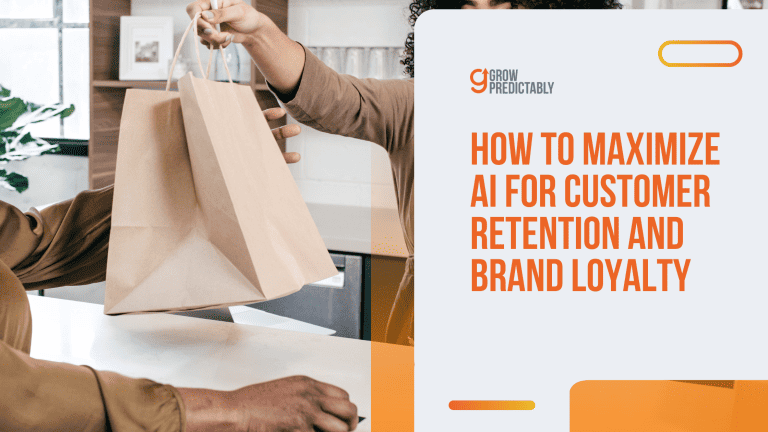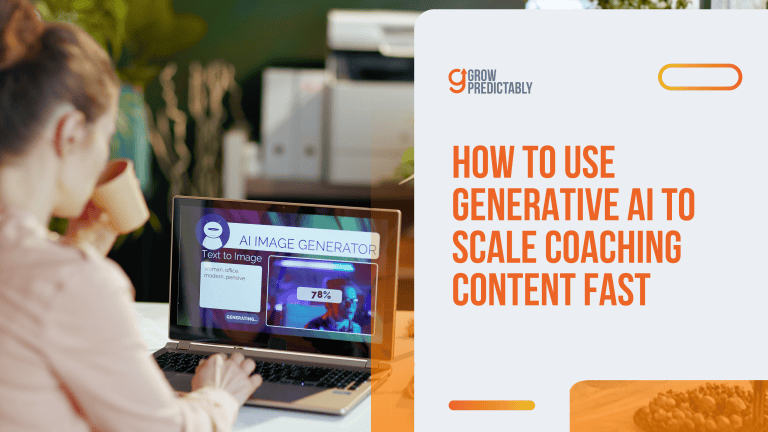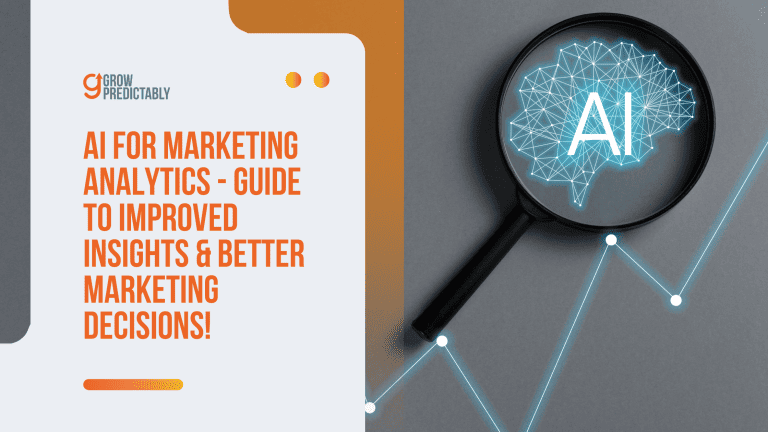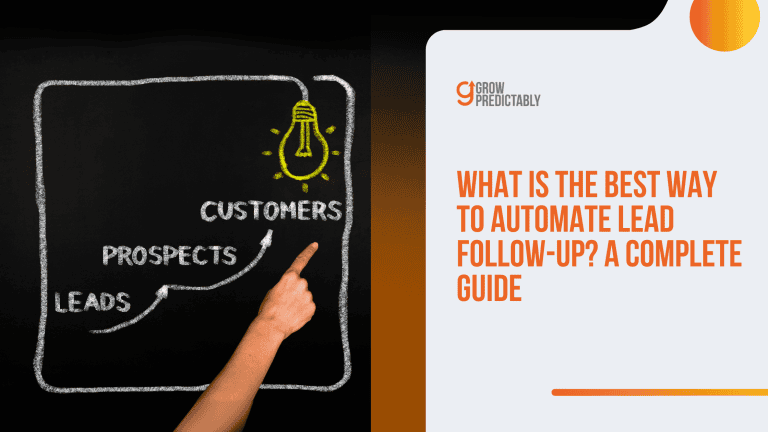5 Key Benefits of AI for B2B Agency Resource Planning
Your team’s underwater with deadlines, spreadsheets can’t keep up, and your best people are stuck on the wrong work.
AI flips that.
Agencies using AI for resource planning have cut delays and boosted team usage.
This guide shows how.
It’s not just about automating tasks—it’s about predicting needs, optimizing talent, and staying ahead.
Want to see how top agencies reap the benefits of AI for B2B agency resource planning and win back control?
Let’s get into it.
TL;DR
AI benefits B2B agency resource planning by accurately predicting needs, optimizing resource allocation, enhancing project management, and improving decision-making. It utilizes predictive analytics to match skills to projects, streamline workflows, and bolster financial resource management, ultimately leading to greater efficiency and effectiveness.
KEY TAKEAWAYS
- Integrate AI-driven HR and project management platforms to better allocate tasks based on employee skills and availability.
- Employ AI-powered budgeting tools to ensure accurate financial forecasts and promptly adjust spending for maximum ROI.
- Regularly assess and integrate new AI solutions to stay ahead of resource management challenges and enhance agency operations.
What is Resource Management?
Resource management, or resource planning, is all about strategically allocating your agency’s assets—people, tools, and budgets—to maximize productivity and achieve your goals efficiently.
For digital marketing agencies, this means ensuring the right creative talent, analytics experts, and marketing tools are available when and where they’re needed.
It’s crucial because the success of campaigns relies on having the right mix of expertise and tools.
Effective resource management helps prevent bottlenecks, minimize downtime, and optimize workload distribution to deliver campaigns on time and within budget.
By staying on top of resource planning, agencies can better align their teams with client needs, adapt to changing demands based on customer data, and maintain a competitive edge.
It’s about streamlining efforts so that both creativity and results are delivered seamlessly.
How Can AI Help in Agency Resource Planning?
Imagine your team’s swamped with projects, deadlines are tight, and you’re struggling to match the right talent with incoming work.
Does this sound familiar? You’re not alone.
A recent study on quantum AI shows how using AI for project management can cut project delays by 60%. It can also optimize resource allocation by 83%. (Source)
That’s the difference between constantly playing catch-up and staying ahead of the curve.
Now, let’s dive into how data driven decisions allow you to use AI in reshaping resource planning in marketing campaigns for B2B agencies.
Who Is This Guide For?
- Chief Operating Officers seeking smarter resource allocation.
- Project Managers battling with pipeline forecasting.
- Resource Leads looking to maximize team potential.
Many agencies still rely on gut feelings and spreadsheets for resource planning, while others are already boosting their processes with machine learning, natural language processing, and data driven decisions powered by AI.
This leads to last-minute staffing scrambles, underutilized talent, missed opportunities, and burnout from poor workload distribution.
AI brings a fresh approach to these age-old challenges.
By analyzing patterns in your project data, AI can predict resource needs weeks in advance.
- It can match skills to projects more accurately.
- It can flag potential bottlenecks before they happen.
- It can balance workloads fairly across teams.
In this guide, we’ll walk through game-changing AI tools transforming agency operations and marketing efforts.
With strategic thinking, we’ll discuss step-by-step implementation strategies and talk about common pitfalls and how to avoid them.
Are you ready to transform your resource planning?
Let’s explore how AI can help your agency work smarter, not harder.
What Are 5 Key Benefits of Using AI in Agency Resource Planning?
Let’s take a moment to break down how AI is reshaping resource planning for digital agencies into something both impactful and manageable.
When we talk about resource planning, this involves five different types of resources that agencies must keep an eye on to ensure projects run smoothly and objectives are achieved.
These resources that impact your marketing strategies include…

In managing all of these, AI steps in not just as a solution, but as an ally in optimizing each aspect with precision and foresight.
Let’s explore how AI tackles common resource dilemmas, aiding data driven decisions, and delivers valuable insights.
1. Human Resources
In digital agencies, balancing workloads and ensuring the right skills are aligned with project needs can be challenging.
AI tackles these issues by using predictive analytics on past performance data to predict which team members are best suited for upcoming tasks based on their availability and expertise.
This predictive allocation minimizes over or underutilization, fostering a well-balanced team dynamic and enabling businesses to achieve greater efficiencies.
As found in SHRM’s 2024 Talent Trends: AI in HR report, three-quarters of HR professionals agree that advancements in AI will heighten the value of human judgment in the workplace over the next five years. (Source)
Imagine a scenario where your agency has multiple campaigns launching simultaneously. AI can swiftly allocate tasks to team members who have both the capacity and the right skill set, analyzing data to prevent burnout and ensuring timely delivery by aligning with effective marketing strategies. AI tools can match projects with the right talent by analyzing project requirements and individual employee profiles, leading to more successful campaign results.
To get started:
- Integrate AI-driven HR platforms that offer data analysis and predictive analytics.
- Use AI tools to map out employee skills and past projects for better task assignment.
- Implement AI-driven workload management systems to balance team schedules.
2. Financial Resources
Maintaining budgets while meeting client expectations is a perennial challenge for agencies, especially sales teams.
AI assists by offering predictive budgeting based on historical data and current trends, providing more accurate financial forecasts.
This helps in anticipating budget overruns and adjusting spend accordingly.
In practice, AI can analyze spending patterns and suggest areas for cost-cutting or reallocation. For example, if a campaign is under budget, AI can identify this early on and suggest reallocating funds to high-performing areas, maximizing ROI.
To implement AI for financial resources:
- Use AI-powered budgeting and forecasting tools.
- Set up automated financial tracking and reporting systems for your sales teams through AI.
- Leverage AI to monitor real-time financial metrics for quick adjustments.
3. Technological Resources
Choosing the right software and tools is crucial for successful marketing initiatives.
Agencies often struggle with underutilized tech investments or outdated software.
AI can evaluate tool usage across the agency, recommending optimizations or replacements.
Picture an agency utilizing multiple tools for analytics which aren’t fully used. AI can assess tool performance and usage, suggesting streamlined alternatives that integrate better with existing systems, saving costs and improving efficiency.
Steps to improve tech resources with AI:
- Leverage AI to assess tool efficacy, customer behavior, and adoption rates.
- Implement AI-driven software management systems.
- Use AI’s valuable insights to guide decisions about future tech investments.
4. Time
Meeting deadlines and effectively scheduling tasks remains a consistent pressure.
AI supports time management in B2B marketing by automating scheduling and deadlines management, offering real-time adjustments, and forecasting project timelines more accurately.
By 2030, according to a Gartner press release, 80% of today’s project management discipline will be eliminated as AI takes on traditional PM functions such as data collection, tracking and reporting, freeing up time for more strategic work. (Source)
For instance, consider an agency managing multiple deliverables with tight deadlines. AI schedules tasks across the team, making adjustments based on real-time progress updates, ensuring deadlines are met without last-minute scrambles, thereby enabling businesses to operate seamlessly.
To harness AI for time management:
- Introduce AI scheduling tools into your project management workflow.
- Use AI for real-time progress tracking and adjustments in your marketing strategies.
- Implement automated alerts for approaching deadlines.
5. Physical Resources
Space and equipment utilization can often be inefficient, with resources either overbooked or underused.
AI can monitor usage patterns and predict needs, optimizing physical resource allocation.
Imagine an agency with fluctuating space needs due to remote work policies. AI can assess space utilization trends, helping to allocate office space dynamically or adjust facility investments accordingly.
To optimize physical resources with AI and optimize marketing campaigns:
- Implement AI systems in your marketing strategies to track and predict space usage.
- Use AI for scheduling shared resources like meeting rooms or equipment.
- Incorporate AI insights into facility management planning.
By integrating AI across these areas, digital agencies can enhance their resource planning processes, leading to increased efficiency, reduced costs, better project outcomes, and improved marketing efforts.
Can Different Teams Leverage AI During Resource Planning?
Because every team has different needs and goals to meet, resource planning can look very different for all of them.
Their common ground? The disruption that comes from delays, unexpected changes, and misuse of resource.
That’s the old way.
Now, smart AI tools are utilized by organizations worldwide to supercharge workforce planning.

Let’s break down how AI makes resource planning and marketing campaigns smoother for different agency teams.
Creative Teams
For creative teams, the most pressing resource concern is often time.
Deadlines are usually tight, and managing timelines efficiently is crucial.
AI comes to the rescue by offering predictive analytics for task scheduling, ensuring projects stay on track and deadlines are met without the last-minute rush.
How AI can help creative teams:
- Implement AI-driven project management tools to automatically schedule tasks based on project timelines.
- Use AI to monitor real-time progress and adjust schedules dynamically.
- Leverage AI for workload balancing to prevent team burnout and optimize productivity.
Development Teams
Development teams are primarily challenged with technological resources—ensuring the right tools and software are available for efficient coding and testing.
AI aids these teams by evaluating tool usage and recommending optimizations or the procurement of new technologies.
How AI can assist development teams:
- Use AI for data analysis to analyze software utilization and streamline your tech stack.
- Implement AI-driven tools to suggest integrations and tool upgrades for better efficiency.
- Employ AI systems for analyzing data to forecast tech needs based on project scopes, enabling businesses to ensure seamless operations.
Consulting Teams
For consulting teams, human resources are a key focus, especially matching skills with project requirements using customer data.
AI facilitates this by analyzing consultant profiles and project needs, ensuring the best fit and reducing downtime or bench time.
Ways consulting teams can leverage AI in b2b marketing for enhanced customer engagement:
- Analyze performance data through AI for better project-consultant alignment.
- Use AI to match consultant skills with project requirements automatically.
- Implement AI systems to track availability and recommend team assignments.
| Aspect | Before AI | After AI |
|---|---|---|
| Planning Method | Manual Planning | AI-Powered Planning |
| Scheduling Time | 4 hours scheduling | 1 hour scheduling |
| Accuracy | 65% accuracy | 90% accuracy |
| Update Frequency | Weekly updates | Real-time updates |
| Change Management | Reactive changes | Predictive adjustments |
The real magic of AI in B2B marketing happens when these tools work together.
For example, if you combine Waydev with Resource Guru, you can significantly cut down project delays in just a matter of a month or two.
But tools are just the start.
Want to see what happens when agencies fully embrace AI across all teams to make data driven decisions?
The next section shows you exactly how strategic advantages multiply when AI in B2B marketing powers your decision-making and customer experience.
Remember: Strategic thinking – start small, measure results, and scale what works.
What Tools to Use for B2B Agency Resource Planning?
Are you ready to discover the game-changing tools reshaping B2B agencies?
Let’s jump into a practical breakdown of the most impactful AI platforms making waves.
Project Management Powerhouses
Here’s the content in a table format:
| Tool | What it does | Perfect for | Real impact | Current status |
|---|---|---|---|---|
| Monday.com AI Assistant (Beta) | Turns meeting notes into tasks, predicts project timelines, and flags potential bottlenecks. | Mid-sized creative teams handling multiple client projects. | Reduces planning time by up to 30%. | Beta testing with enterprise users. |
| Asana Intelligence | Maps work patterns, suggests task distributions, and forecasts team capacity. | Agencies with 20+ team members working across departments. | Cuts resource allocation meetings in half. | Fully launched for Business and Enterprise plans. |
Client Management Systems
| Tool | What it does | Perfect for | Real impact | Current status |
|---|---|---|---|---|
| HubSpot’s Operations Hub | Predicts client needs, automates data cleaning, and syncs cross-platform information. | Small to mid-sized agencies focused on growth. | 40% reduction in manual data entry. | Available to all Professional and Enterprise users. |
| Salesforce Einstein | Salesforce Einstein forecasts deal closing probability, suggests next best actions, and tracks client engagement patterns to improve customer interactions for sales teams. | Large agencies managing complex sales cycles. | 28% boost in opportunity win rates. | Available across multiple Salesforce editions. |
Engineering and Development Tools
| Tool | What it does | Perfect for | Real impact | Current status |
|---|---|---|---|---|
| Waydev | Analyzes engineering data to improve sprint planning and resource allocation. | Digital agencies with development teams. | 25% more accurate delivery estimates. | Full release with regular updates. |
Quick Tip: Start small! Pick one tool that matches your biggest pain point and run a pilot program before scaling up.
Choosing Your Perfect Match
- Small Agencies (1-20 people): Start with HubSpot’s Operations Hub. Add Monday.com AI as you grow. Focus on quick wins and easy implementation.
- Mid-Size Agencies (20-100 people): Consider Asana Intelligence for team coordination. Add Salesforce Einstein for valuable insights regarding clients. Look for tools with strong integration capabilities.
- Enterprise Agencies (100+ people): Full Salesforce Einstein suite. Custom API integrations. Multiple tool combinations based on department needs.
Are you ready to pick your tools?
The best AI powered tools for marketing strategies isn’t always the most expensive or feature-rich option – it’s the one that fits your workflow like a glove to optimize marketing campaigns.
In the following section, we’ll walk through a practical implementation guide to make these tools work for your unique needs.
How Can You Implement AI in B2B Agency Resource Planning?
Welcome to your practical and engaging guide to implementing AI in your agency’s resource planning.
With these steps, your agency’s resource planning will be leveraging real AI power in no time.

Step 1: Take Stock of Your Current Setup
Start by mapping out how you handle resource planning now.
Ask yourself: What’s working and what’s not working?
Track time spent on manual tasks for two weeks – analyzing data gives you solid baseline results.
Pro Tip: Take screenshots of your current processes.
They’ll be gold when measuring improvements later.
Step 2: Set Clear Goals and Success Markers
Pick 2-3 specific goals you want to achieve.
For example:
- Cut resource allocation time by 40%
- Reduce project delays from staffing issues
- Boost team utilization rates by 15%
Step 3: Check Your Data Health
Look at what data you have and where it lives.
You’ll need:
- Past project timelines
- Team capacity records
- Client demand patterns
- Budget tracking
Common Mistake: Rushing to buy tools before knowing if you have the right data regarding customer behavior to feed them.
Step 4: Pick Your Tools Wisely
Match tools to your agency’s size.
Small Agencies (1-20 people):
- Start with ready-to-use platforms
- Focus on quick wins like automated scheduling
- Budget range: $50-200 per user/month
Mid-Size Agencies (21-100 people):
- Look for tools that work together
- Balance automation with customization
- Budget range: $150-400 per user/month
Large Agencies (100+ people):
- Consider custom solutions
- Focus on scalability
- Budget range: $350+ per user/month
Step 5: Start Small, Think Big
Pick one department for your pilot program.
Creative teams or development squads work well as testing grounds.
Pro Tip: Run your pilot for 6-8 weeks.
This gives enough time to spot patterns while keeping momentum.
Step 6: Bring Your Team Along
Success hinges on your team actually using the new AI powered tools.
Here’s what works:
- Show personal benefits (“This saves you 5 hours every week”)
- Offer hands-on training sessions
- Name AI champions in each team
- Share quick wins publicly
Step 7: Watch, Learn, Grow
Set up weekly check-ins to track patterns using historical data:
- Tool usage rates
- Time savings
- Team feedback
- Client satisfaction
Common Mistake: Not having a feedback loop.
Make it easy for teams to report issues.
Remember: This isn’t a race.
Smart implementation beats fast implementation every time.
What Are Common Resource Planning Concerns for Agencies?
Let’s face it – bringing AI into your agency’s resource planning isn’t an all-smooth sailing process.
But don’t worry!
Every challenge has practical solutions, and I’m here to walk you through them.
Data Privacy and Security
Privacy concerns keep many agency leaders up at night – and rightly so.
Your client data is precious cargo.
Key Challenges:
- GDPR and CCPA compliance requirements on customer data
- Client data protection across AI tools
- Cross-border data transfer restrictions
Why This Matters: One data breach can damage client trust and trigger hefty fines.
Solution Path:
- Pick AI tools with built-in compliance features
- Set up data residency controls
- Create clear data handling protocols
Staff Resistance and Change Management
Your team might worry about AI replacing their jobs or disrupting their workflow.
Key Challenges:
- Fear of job displacement
- Learning curve anxiety
- Resistance to new processes
Why This Matters: Without team buy-in, even the best AI tools will gather dust.
Solution Path:
- Start with small wins
- Run hands-on training sessions
- Share success stories from early adopters
Ethical AI Usage
Making sure your AI tools make fair, unbiased decisions is crucial.
Key Challenges:
- Algorithmic bias in resource allocation
- Transparency in AI decision-making
- Fair treatment across client portfolios
Why This Matters: Biased AI can lead to unfair resource distribution and damaged client relationships.
Solution Path:
- Choose AI tools with transparent algorithms
- Regular bias testing and monitoring
- Keep humans in the loop for key decisions
Cost and ROI Concerns
Budget worries are real, especially for smaller agencies.
Key Challenges:
- Initial investment hurdles
- Unclear return timeline
- Hidden implementation costs
Why This Matters: Without proper planning, AI investments might not deliver expected returns.
Solution Path:
- Start with pilot programs
- Track clear ROI metrics and focus on historical data analysis
- Scale gradually based on results
Quick Reference: Tool Selection Guide
For Small Agencies:
- Focus on ready-to-use platforms that rapidly enhance marketing efforts
- Look for monthly subscription options
- Prioritize tools with free trials
For Mid-Size Agencies:
- Balance customization with cost
- Consider hybrid solutions
- Look for scalable pricing models
For Enterprise Agencies:
- Invest in custom solutions
- Focus on deep integration capabilities
- Prioritize advanced security features
Remember: These challenges in AI in B2B marketing aren’t roadblocks – they’re stepping stones to smarter resource planning.
Take them one at a time, and you’ll build a stronger, more efficient agency.
FAQs
Transform Planning Into Your Superpower
AI is rewriting the rules of agency resourcing.
What used to take hours of guesswork can now be done in minutes—with better outcomes.
As we’ve seen, agency leaders are already:
- Improving utilization by double digits
- Reducing bench time
- Winning more deals
- Making teams feel supported, not stretched
That kind of transformation is within your reach too.
🔍 Which outdated process is costing you the most—and what would smarter planning free you up to focus on?
This isn’t about buying a tool. It’s about building a smarter agency in b2b marketing—where time works for you, not against you.
Make the next move. We’re here to help guide it.





![7 Best AI Story Generators in 2025 for Your Next Story [Ranked]](https://growpredictably.com/wp-content/uploads/2024/11/AI-Story-Generators-in-2025-768x432.jpg)


